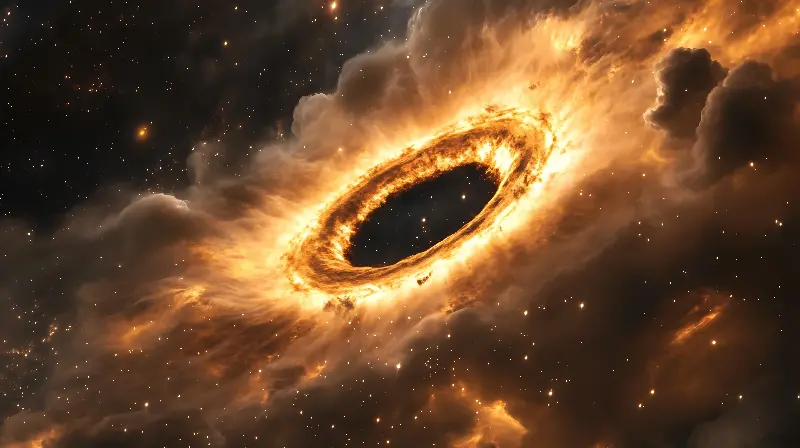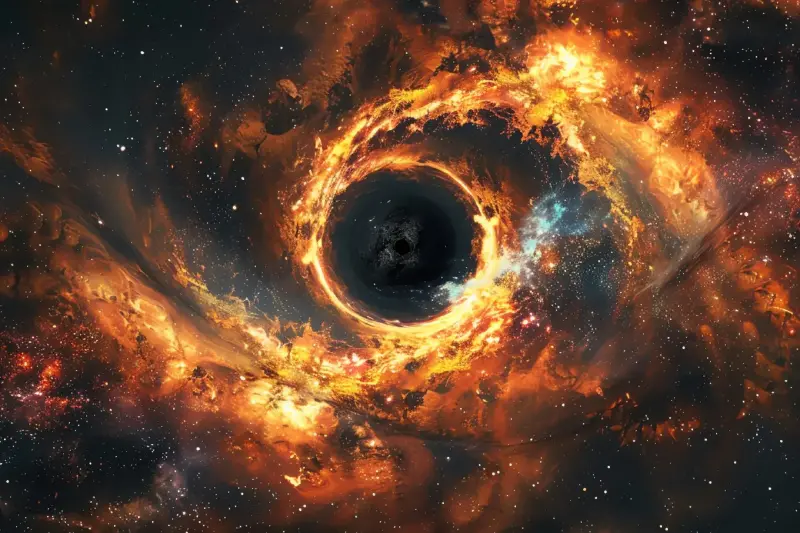Black holes are some of the most captivating and bewildering objects in our universe. For decades, they have captured the imaginations of scientists and stargazers alike, shrouded in a veil of mystery and extreme physics. What exactly are black holes? How do they form, and why are they so important to our understanding of the cosmos? In this article, we journey into the heart of these cosmic enigmas to reveal fascinating facts that help unlock their secrets.

The Birth and Lifecycle of Black Holes
Black holes begin their existence in the hearts of massive stars. When a star at least eight times the mass of our sun exhausts its nuclear fuel, it succumbs to gravity. Its core collapses, triggering a supernova explosion. If the core remnant is heavy enough, it will collapse further into a singularity—an infinitely dense point—surrounded by an event horizon beyond which nothing, not even light, can escape.
There are various types of black holes, categorised mainly by their mass. Stellar-mass black holes, which are a few times heavier than our sun, are the most common. Supermassive black holes, weighing millions or even billions of times more than our sun, lurk in the centres of most galaxies, including our own Milky Way. Astronomers believe intermediate-mass black holes are the missing link between these two classes, although they are far more elusive and difficult to study.
The Event Horizon: The Point of No Return
Perhaps the most famous aspect of a black hole is its event horizon. This is the boundary surrounding a black hole where escape velocity exceeds the speed of light. If you were to cross this invisible line, you’d never come back. The closer you get to the event horizon, the stronger the pull of gravity—time itself begins to slow down, thanks to a phenomenon known as time dilation.
For a large black hole, you could theoretically cross the event horizon without being torn apart instantly. In this case, you would experience ‘spaghettification’ further inward, where the gravitational difference between your head and feet would stretch you into a long, thin shape. In smaller black holes, this catastrophic process happens much more quickly and violently.
Black Holes Bend Space and Time
Contrary to what many science fiction movies suggest, black holes do not roam the cosmos sucking up everything in their path. They are simply objects with intense gravitational fields. If our sun were replaced by a black hole of the same mass, Earth would continue to orbit at the same distance, although life as we know it would not survive the resulting darkness.
Black holes warp space and time around them in exotic ways. Einstein’s general theory of relativity predicts that the presence of a massive object distorts the very fabric of space-time. Near a black hole, these effects are extreme: light bends around them, and time slows dramatically. This gravitational lensing is why images of black holes, such as the famous first photograph captured by the Event Horizon Telescope, appear as a glowing ring surrounding a dark shadow.

Black Holes and the Information Paradox
One of the most intriguing mysteries in theoretical physics involves black holes and the nature of information. According to quantum mechanics, information about the physical state of something can never be truly destroyed. But what happens to matter and information that falls into a black hole? Does it disappear forever?
This conundrum, known as the black hole information paradox, has puzzled scientists for decades. Stephen Hawking famously argued that information is lost in black holes, but later revised his theory. Today, many physicists believe that information is somehow preserved, possibly encoded on the event horizon itself—a concept called the holographic principle. The debate continues, making black holes not only visually but also intellectually compelling cosmic wonders.
Supermassive Black Holes: Cosmic Giants with Powerful Influence
At the centre of most large galaxies, including the Milky Way, lies a supermassive black hole. The one at our galaxy’s heart is called Sagittarius A* and weighs about four million times the mass of our sun. Supermassive black holes can influence the formation of stars and galaxies themselves, acting as galactic engines that regulate their host’s growth.
The relationship between a galaxy and its central black hole is so powerful that some scientists propose it may help explain why galaxies assume their characteristic shapes and sizes. Enormous outflows of energy from supermassive black holes can trigger or halt star formation, sculpting galactic evolution over billions of years.
Detecting the Invisible: How We "See" Black Holes
Black holes are invisible in the traditional sense since light cannot escape them. However, scientists have ingenious ways of detecting their presence. When a black hole feeds on nearby gas or stars, this material swirls around the event horizon, heating up to millions of degrees and emitting intense X-rays before vanishing within. Space telescopes like Chandra and XMM-Newton are designed to spot these telltale X-ray signals.
Ripples in spacetime, known as gravitational waves, also offer another window into black holes. First detected in 2015, these waves are often created by the collision and merger of black holes, producing faint but measurable vibrations that can be picked up by sensitive instruments such as LIGO and Virgo.

black holes in popular imagination and future exploration
Black holes have long been a staple of popular culture, from terrifying monsters in science fiction films to plot twists in novels and television shows. Modern research often reveals that reality is even more fascinating than fiction, with black holes challenging our understanding of time, space, and the very nature of reality.
As technology evolves, astronomers anticipate making more direct observations of black holes, potentially even witnessing “black hole births” from stellar collisions or mapping the event horizon’s fine details. Each discovery not only answers old questions but also opens new ones, ensuring that black holes remain at the forefront of astronomical intrigue.
While many of the mysteries surrounding black holes remain unsolved, our knowledge continues to expand. They are not only the universe’s most mysterious phenomena but also among its most enlightening, giving us unparalleled insight into how the cosmos really works. With every question answered, black holes prove that sometimes, the most fascinating mysteries lie in the heart of darkness itself.
